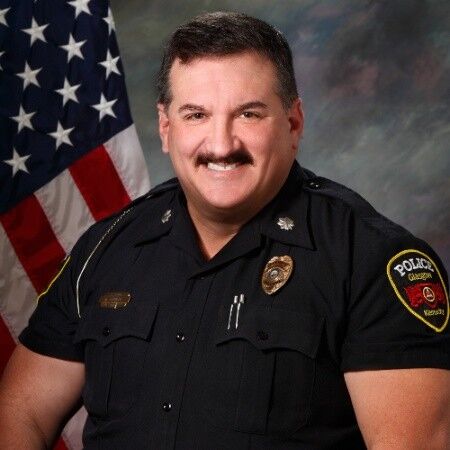SKyPAC First Impressions – An Interview with Orchestra Kentucky’s Jeffrey Reed
Published 2:00 pm Wednesday, February 29, 2012

- Acoustician Russ Cooper, of Norwalk, Ct., sits with the audience and listens as Orchestra Kentucky performs during a tuning session of the main auditorium at SKyPAC, on Tuesday, Feb. 14, 2012 in Bowling Green. (Photo by Alex Slitz/Daily News)
I’ve taken the tour of SKyPAC, Bowling Green’s brand new Performing Arts Center, and I must say, it’s impressive. And that’s just from my view; a music writer and fan who has seen it but not heard a note yet. But I wondered what a true professional musician would think through his even more critical eyes (and ears). So I asked maestro Jeffrey Reed, founder, music director, and conductor of Orchestra Kentucky how impressed he is with the new facility, and then some. So here is some insight into what to expect when you take in a show at SKyPAC, as the hall’s principal tenant sees it.
PM (Penmann): On a scale of 1 to 10, how exciting is Orchestra Kentucky’s move to SKyPAC for you?
JR (Jeffrey Reed): Definitely at 10.
PM: What are the top three things about SKyPAC that makes it a great place for Orchestra KY to play?
JR: 1.) Improved acoustics 2.) Larger stage 3.) Support areas
At our other venues, musicians had trouble hearing each other across the stage. That interferes with their ability to play in tune and in ensemble (together). We were also somewhat limited with stage dimensions at other venues. Although there are larger stages in the world, SKyPAC’s stage is the largest in our region. Finally, we will have dressing rooms for musicians and guest artists, directly off of the stage area. And, there is an acoustically designed rehearsal room that we can use when the hall is being used.
PM: You did the first sound check in SKyPAC with the orchestra on Valentine’s Day, is that correct?
JR: Yes, Valentine’s Day was the first time music was heard in SKyPAC. For the record, it was the opening movement of Gustav Mahler’s Symphony No. 1.
PM: What was your initial reaction once everyone was in place, you were facing the audience, and you were ready to start?
JR: The orchestra members and I have the best “seat in the house”. It is breathtaking to look out into the hall, with its beautiful colors and unique acoustical clouds. That morning, it hit home that all of the years of playing in inferior halls was over.
PM: How did the sound check go? Was there a lot of starting and stopping to make adjustments?
JR: It was magical. We had played the Mahler the night before. But in the new hall, we were playing better than we had ever played it before. It is a difficult piece, requiring the highest level of professional playing. But I realized that the missing piece of the puzzle for Orchestra Kentucky was a good hall. It was like a light bulb went on over my head when I heard the opening strains of the Mahler.
PM: How much different is the sound with and without an audience?
JR: You would have to ask someone who sat in the hall. Generally, though, an audience absorbs sound, which can make a room “deader” (less reverberant). However, the architects and acousticians designed the hall so that it could be adjusted, based on factors such as this.
PM: Speaking of rehearsals, is SKyPAC where you’ll be doing the bulk of your rehearsing?
JR: We are SKyPAC’s resident orchestra. That means that the majority of our concerts and rehearsals will take place there. We may do an occasional outdoor concert, like the Retro concert we presented at the ballpark last spring.
PM: I know you’re not the architect, but are there any acoustical features of the hall that you are particularly impressed with? The unique acoustical ceiling panels? The poplar wood on the walls, etc.?
JR: I expected there to be certain acoustical treatments that are present in all halls (wooden panels, drapes, acoustical clouds, etc.). What is unique about SKyPAC are the acoustical clouds. They are tin, like you would find on 19th century ceilings (440 Main comes to mind). I have never seen them used before. They are usually fairly plain.
PM: What do you think of the stage? Do you foresee the orchestra playing on the orchestra pit hydraulic platform anytime soon?
JR: We are experimenting with the orchestra’s position on the stage. When the orchestra is back, into the acoustical shell, it is best for the orchestra. When we moved forward, closer to the proscenium, it was better for the audience. After talking to the acoustician, I imagine we will play at the proscenium, but we will move the back of the shell up to meet the rear of the orchestra. We may set up over the pit, if we feel it is necessary to get our sound out into the hall more. As far as playing IN the pit, I hope that we will do ballet, opera, and musicals at some point.
PM: You’ll be playing with Leann Rimes on opening night (3/10/2012), is that correct? Is she bringing her own band as well?
JR: We will be opening the hall with a 35 minute first half, featuring a 150 member community choir (SKyPAC Chorus) and the orchestra, playing mostly patriotic music. The orchestra will back Leann Rimes for the second half. She is bringing guitarists, an electric bass player, drummer, and steel player.
PM: How much rehearsal time will you actually have with her before the show starts?
JR: We have a three hour rehearsal with Rimes the afternoon of the show (minus a 20 minute break). This is the first time the orchestra will play her music. This is typical of professional pops-type programs. Only a professional orchestra can basically play through charts like these once, before performing in a concert setting.
PM: Do you anticipate larger audiences for your shows due to the appeal/size of the new hall?
JR: Typically, a new facility attracts new audiences. I certainly hope that it does!
PM: Any plans to still do the occasional show at other venues as was done in the past, such as local churches or the Capitol Theatre?
JR: I don’t foresee us playing at other venues now that we have a state-of-the art performing space. As I said, we will continue some outdoor concerts, just because they are fun and people enjoy being outside during the summer months. Of course, there is always rain!
PM: Will there be a lot of SKyPAC-produced shows that the orchestra will be working too? If so, which of the opening season’s shows will the orchestra be participating in?
JR: SKyPAC hired us to back Leann Rimes. There is a possibility that we could be hired again. That’s a question for SKyPAC’s management. By the way, there is some confusion about our relationship vis a vis SKyPAC. We are separate organizations. We are simply renting the facility for our concerts. And, they hired us to provide an orchestra for their opening.
PM: Do you think the quality of the building has the potential to draw higher-profile orchestral performers to Bowling Green to perform with Orch KY?
JR: I don’t think it will draw performers. They are usually willing to come to town if you can pay their fee. However, the facility will make it possible to satisfy some of the more stringent riders that are found with “bigger” names. It has to do with dressing rooms being off stage and not accessible to the public, bathrooms in the dressing rooms, etc.
PM: The first Orchestra Kentucky-produced show at SKyPAC is on 3/12/2012 – From Russia with Love. Please feel free to elaborate on the details for those who may not be aware that it’s more than just the music.
JR: From Russia with Love will feature a type of Russian circus. Russian acrobats will perform, suspended over the stage while the orchestra plays a Russian program. There will be contortionists, acrobats, jugglers, and dancers. I got a call from my principal trumpet player a couple of weekends ago. He was doing the same show in Huntsville, AL. He thought he remembered that we would be doing the show in Bowling Green. He was quite enthused, saying that they will blow our audience away.
PM: Anything else you would like to share about the move, or what the future holds for Orchestra Kentucky at SKyPAC with our readers?
JR: I believe that the audience will see a marked improvement in the quality of playing from Orchestra Kentucky. I believe they will also have a greater sense of being in a truly first-rate hall. All of this will combine for an experience often only found in larger cities. South Central Kentucky is a major hub for shopping, dining, legal and medical care, etc. Now I anticipate that it will be a destination for the arts.
PM: Thanks for taking the time to answer our questions in what must be a very busy time for you. Best of luck at SKyPAC.
About the author: Pennman bought his first 45 at age nine and has been hooked on rock ever since. He has spent much of his disposable income on music, especially live performances. He writes reviews of the shows he sees and keeps a keen lookout for upcoming shows in or near Bowling Green. He has a BA in Communications, specializing in journalism, and has dabbled in music himself, both as a player and instructor. Find more of Pennman’s work at www.associatedcontent.com/user/165511/pennman.html or visit him at www.myspace.com/pennman_bg or www.facebook.com/pennman






